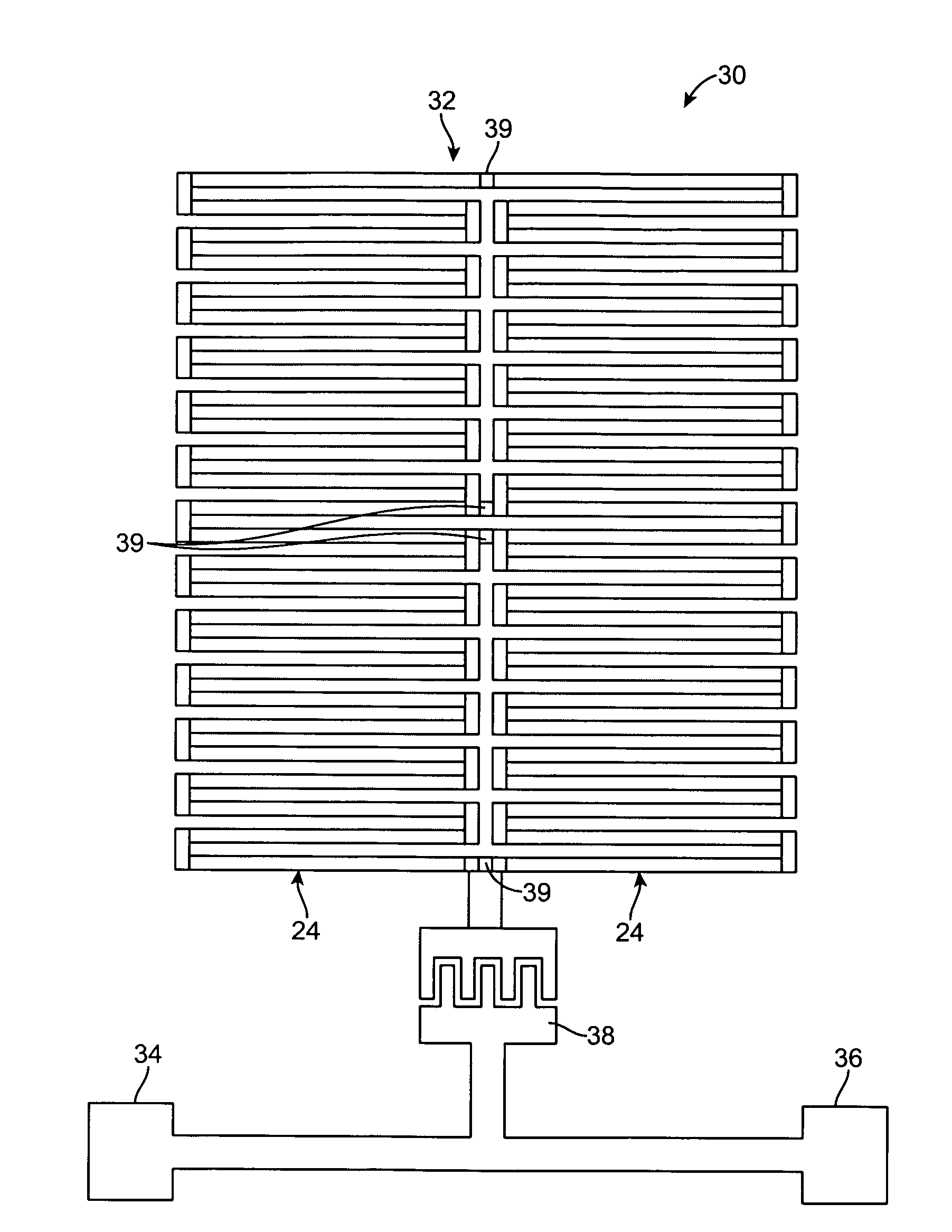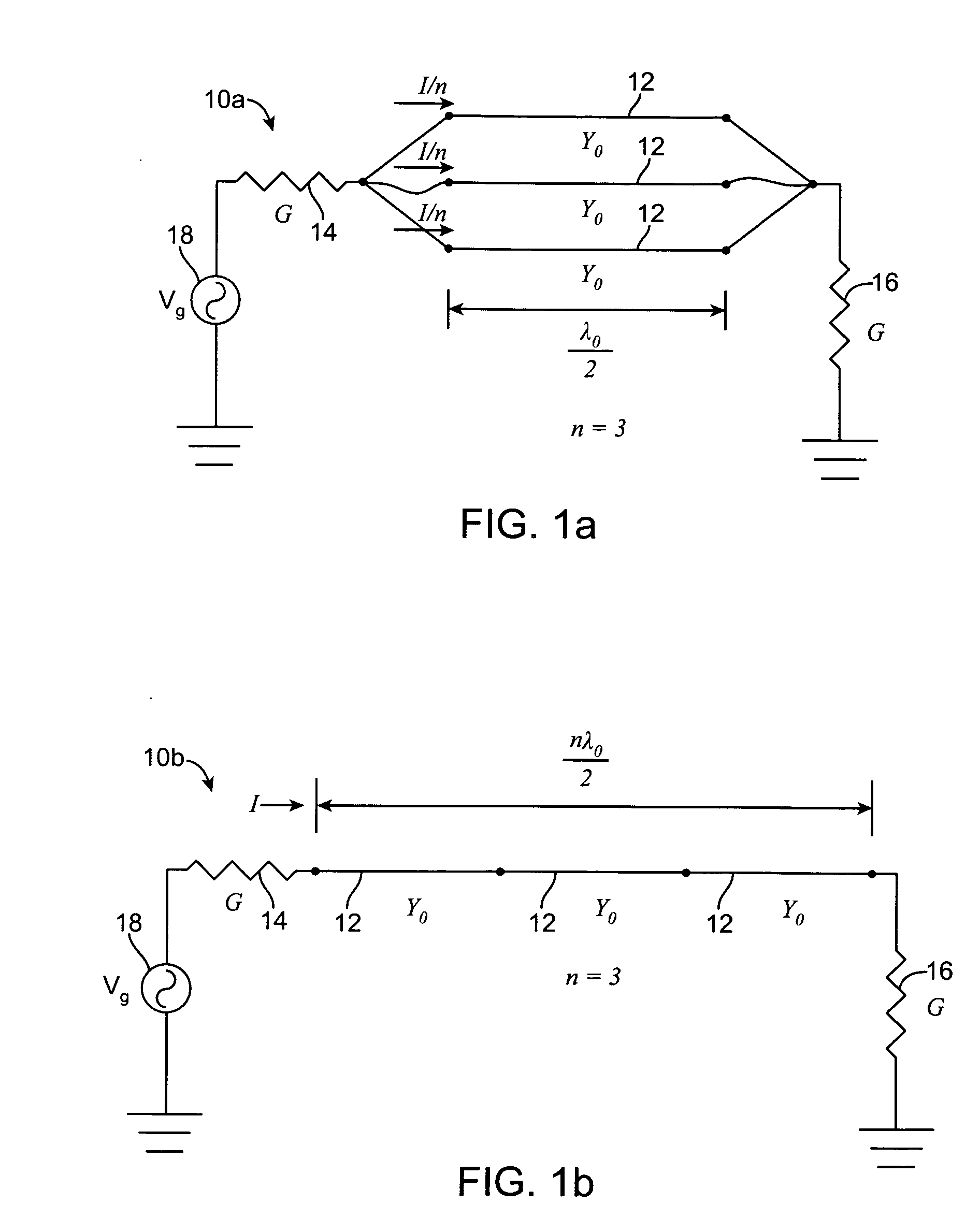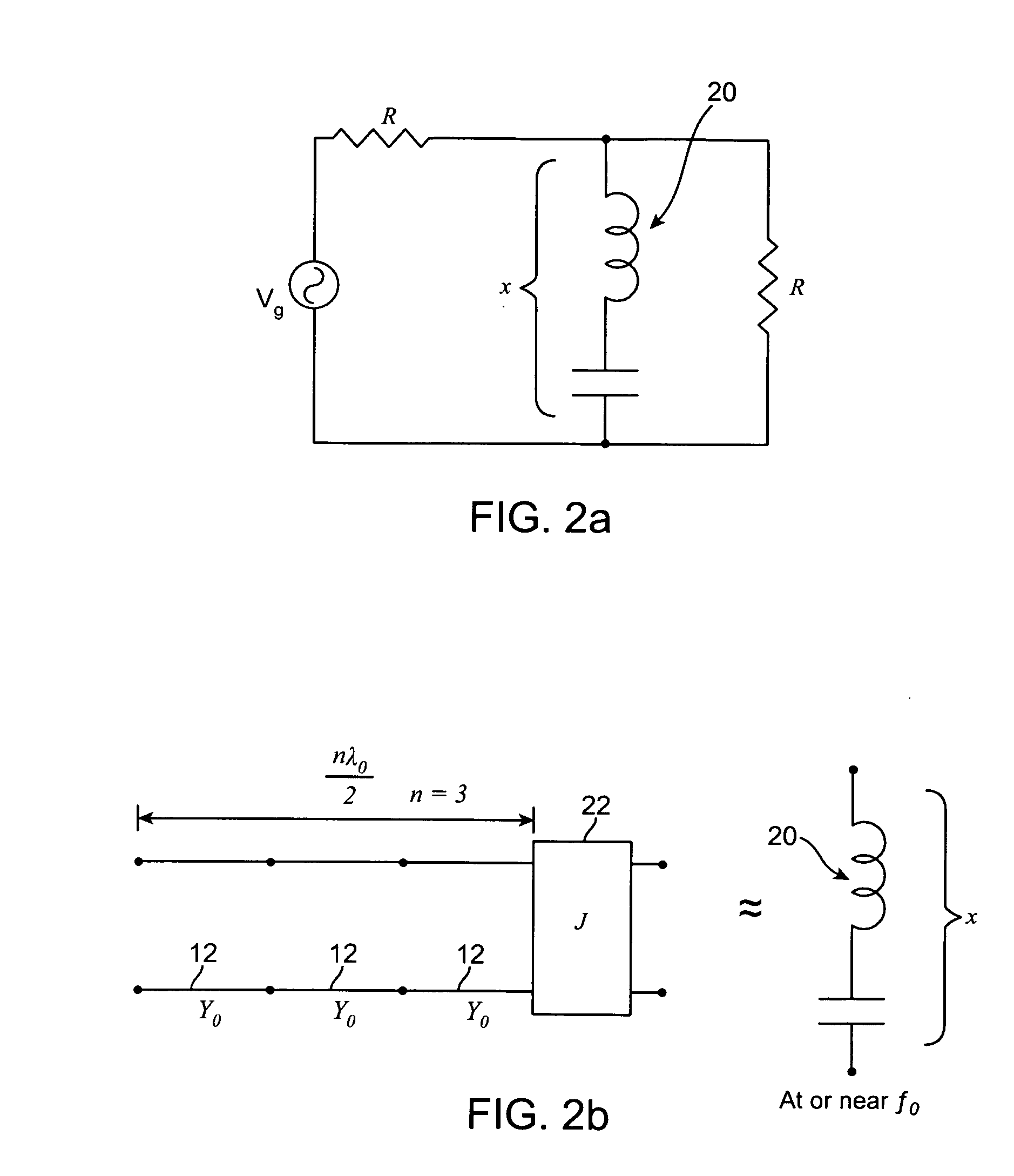Zig-zag array resonators for relatively high-power hts applications
a zig-zag array and hts technology, applied in the field of microwave filters, can solve the problems of affecting the size and cost of the resonator for a given, corresponding compromise in filter steepness or selectivity, and conductors with inherent lossiness
- Summary
- Abstract
- Description
- Claims
- Application Information
AI Technical Summary
Benefits of technology
Problems solved by technology
Method used
Image
Examples
Embodiment Construction
[0041]Each of the following described embodiments of filters comprises an array “basic resonators” that are connected together to create an overall resonant structure, so that the stored energy within the resonant structure is spread throughout the array of basic resonators, and the current density in any of the individual basic resonators will not be very large. As a result, the maximum current density within the resonant structure is minimized, so that the overall resonant structure has considerably higher power-handling ability than that of a basic resonator alone.
[0042]While the immediate focus herein is a relatively high-power HTS application, thereby increasing the importance of minimizing the maximum current density in the resonate structure, many of the same principles described herein would apply if the objective was to minimize the maximum electric field strength in the resonant structure. In either case, the principle is to spread the stored energy through the overall res...
PUM
 Login to View More
Login to View More Abstract
Description
Claims
Application Information
 Login to View More
Login to View More - R&D
- Intellectual Property
- Life Sciences
- Materials
- Tech Scout
- Unparalleled Data Quality
- Higher Quality Content
- 60% Fewer Hallucinations
Browse by: Latest US Patents, China's latest patents, Technical Efficacy Thesaurus, Application Domain, Technology Topic, Popular Technical Reports.
© 2025 PatSnap. All rights reserved.Legal|Privacy policy|Modern Slavery Act Transparency Statement|Sitemap|About US| Contact US: help@patsnap.com



